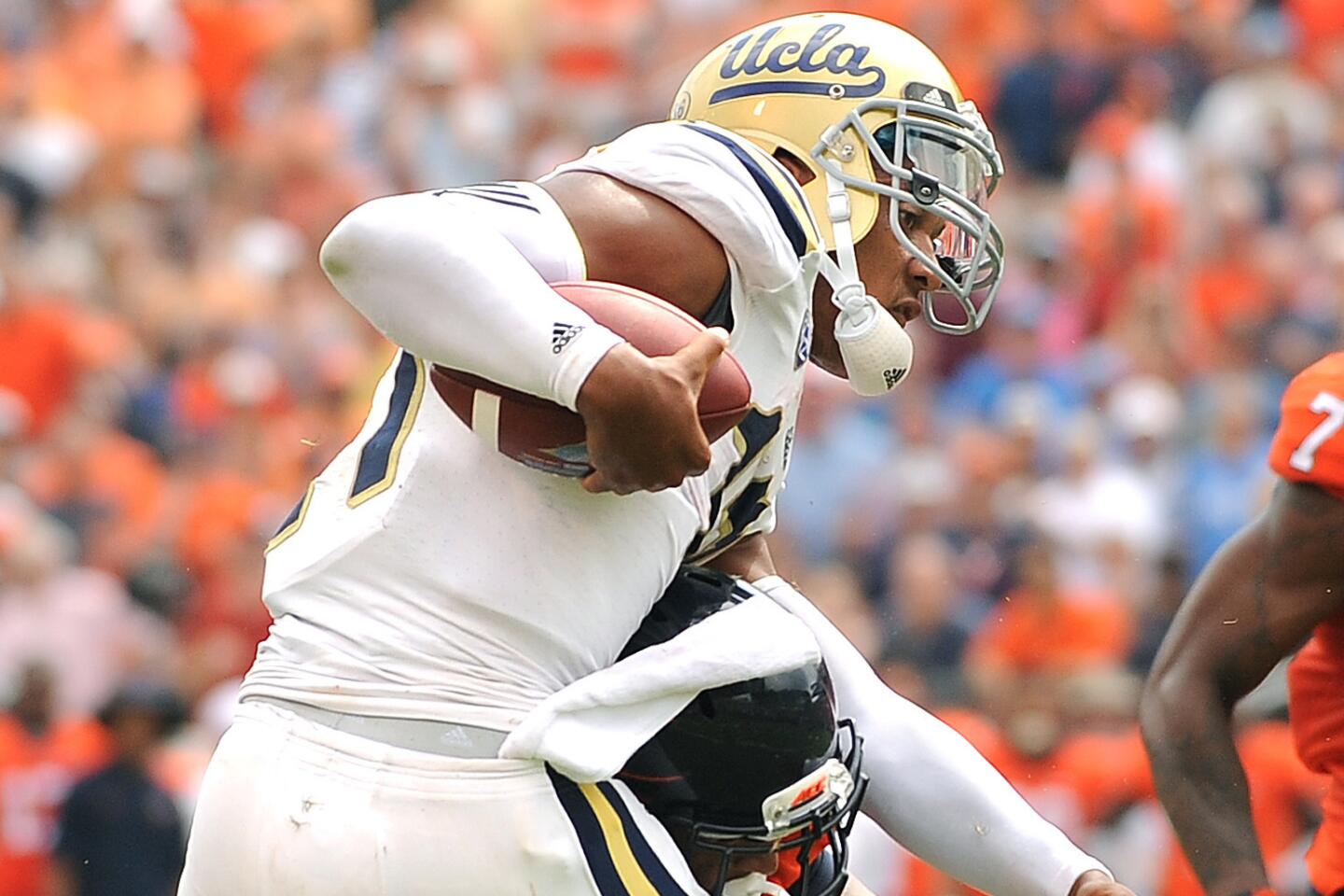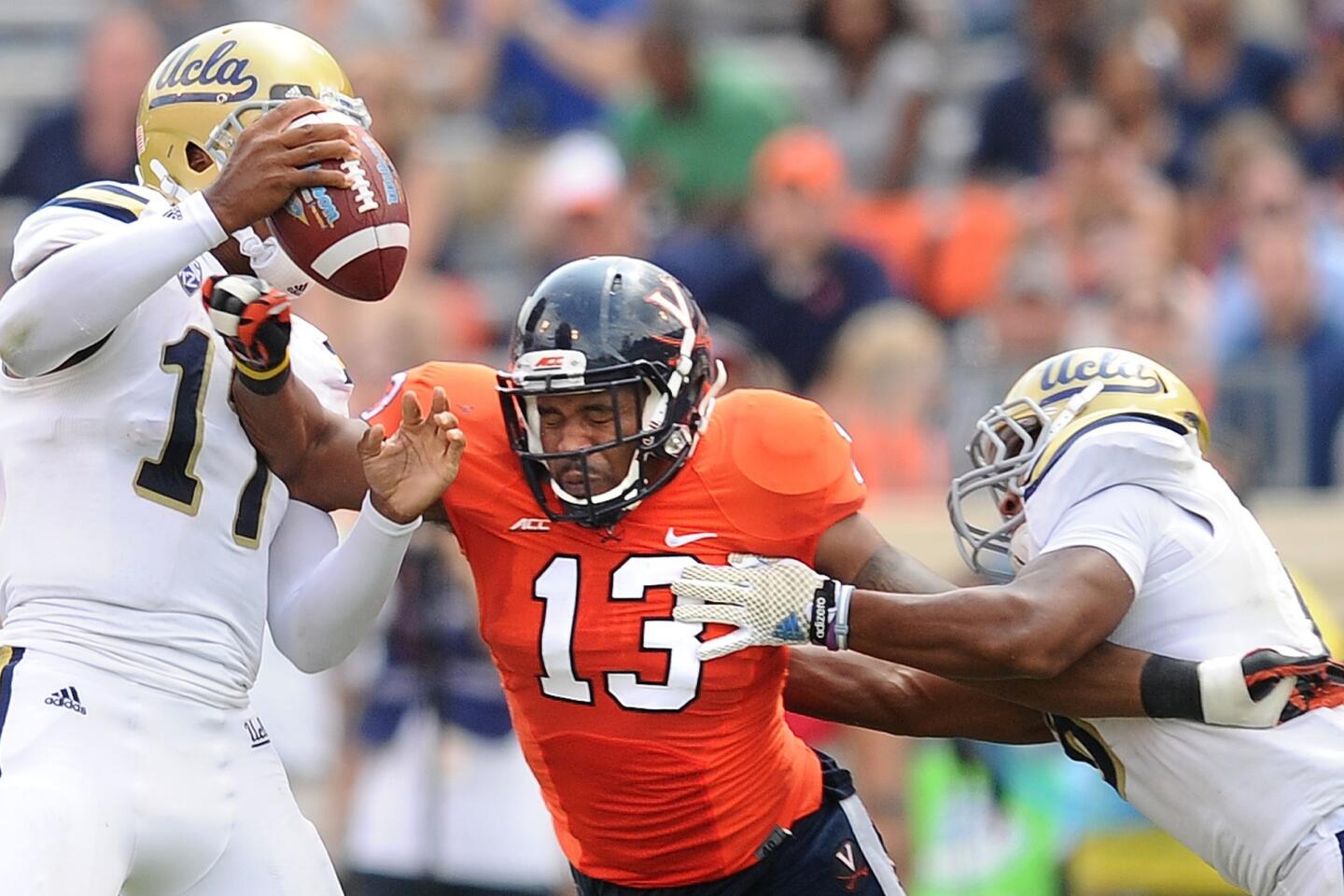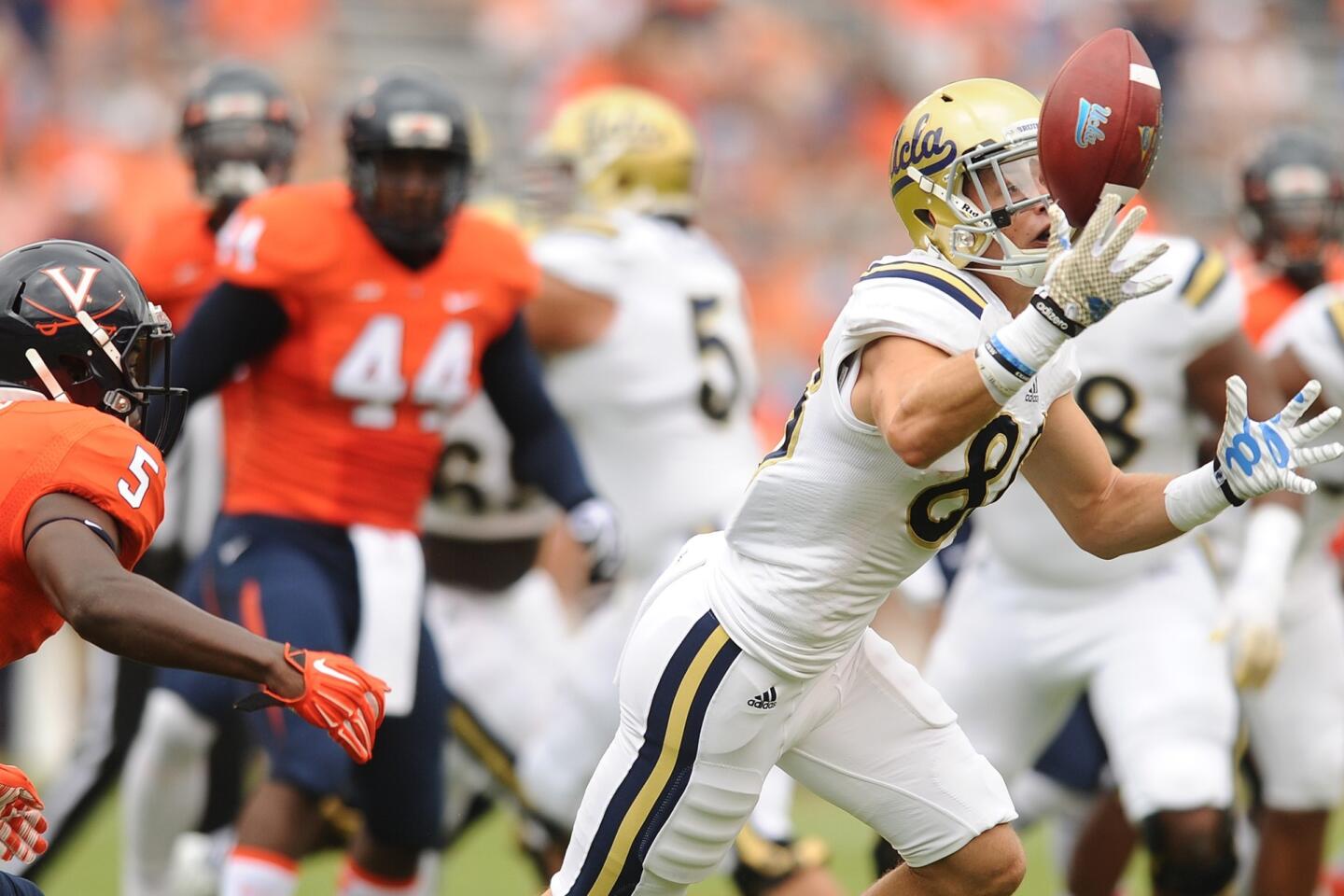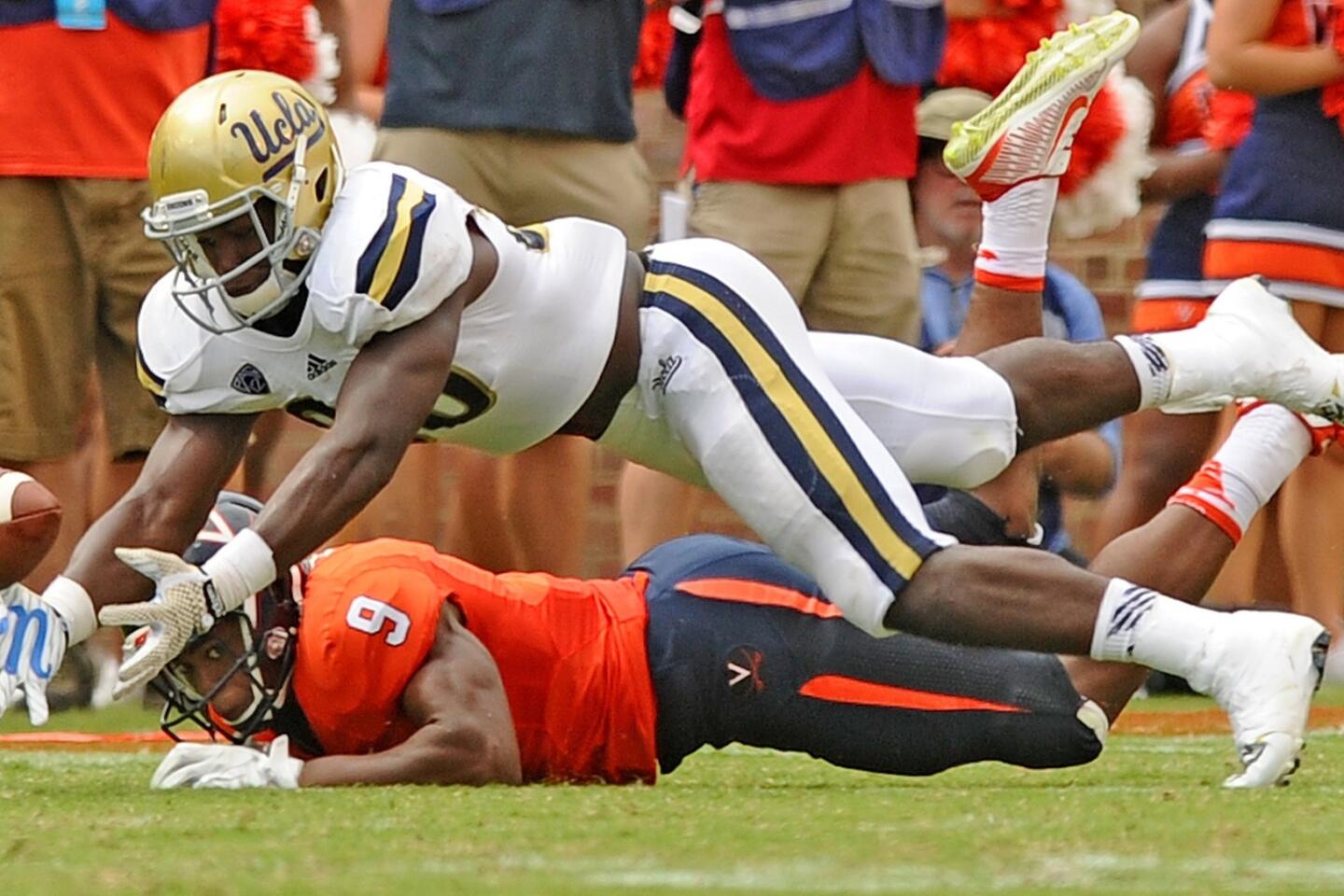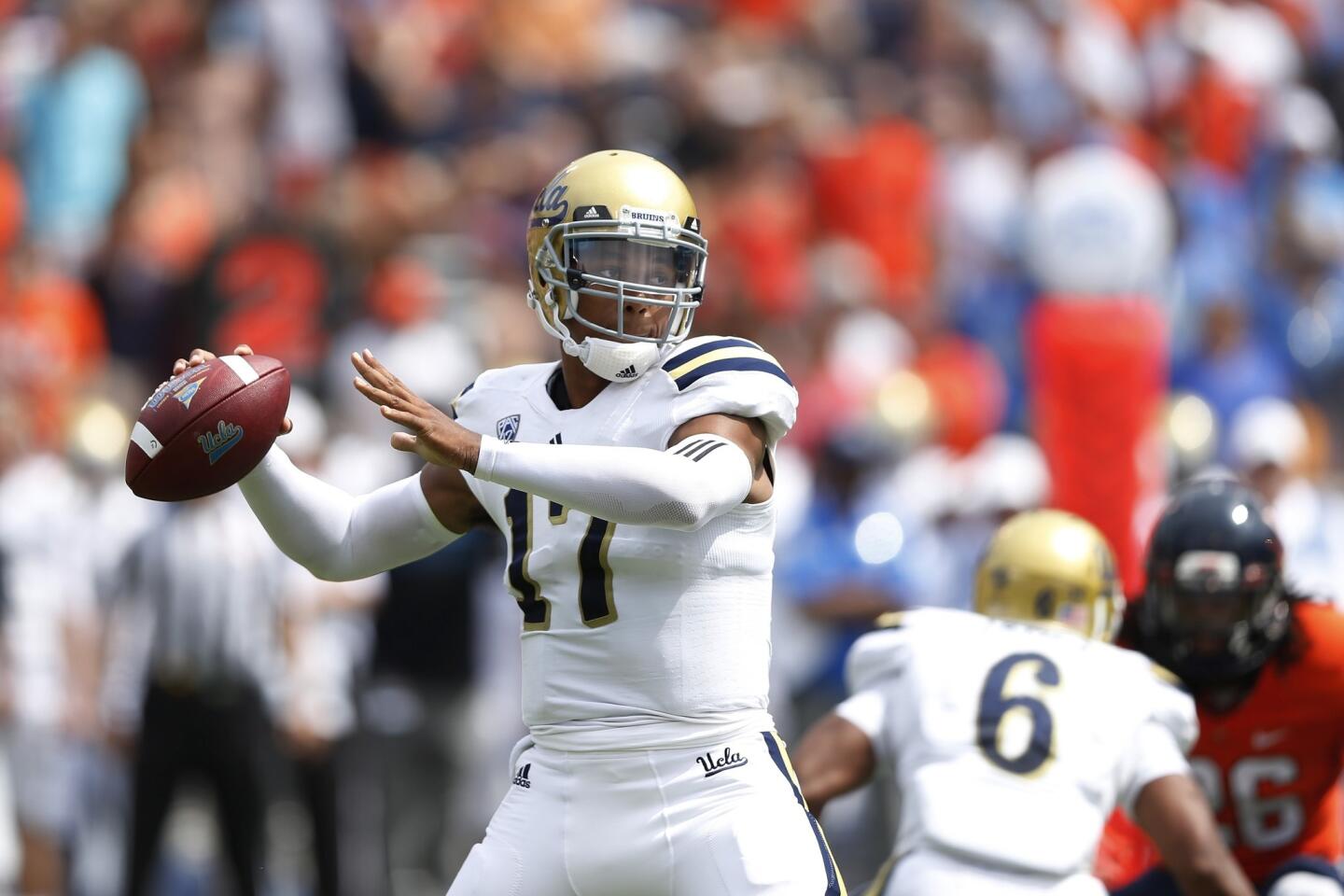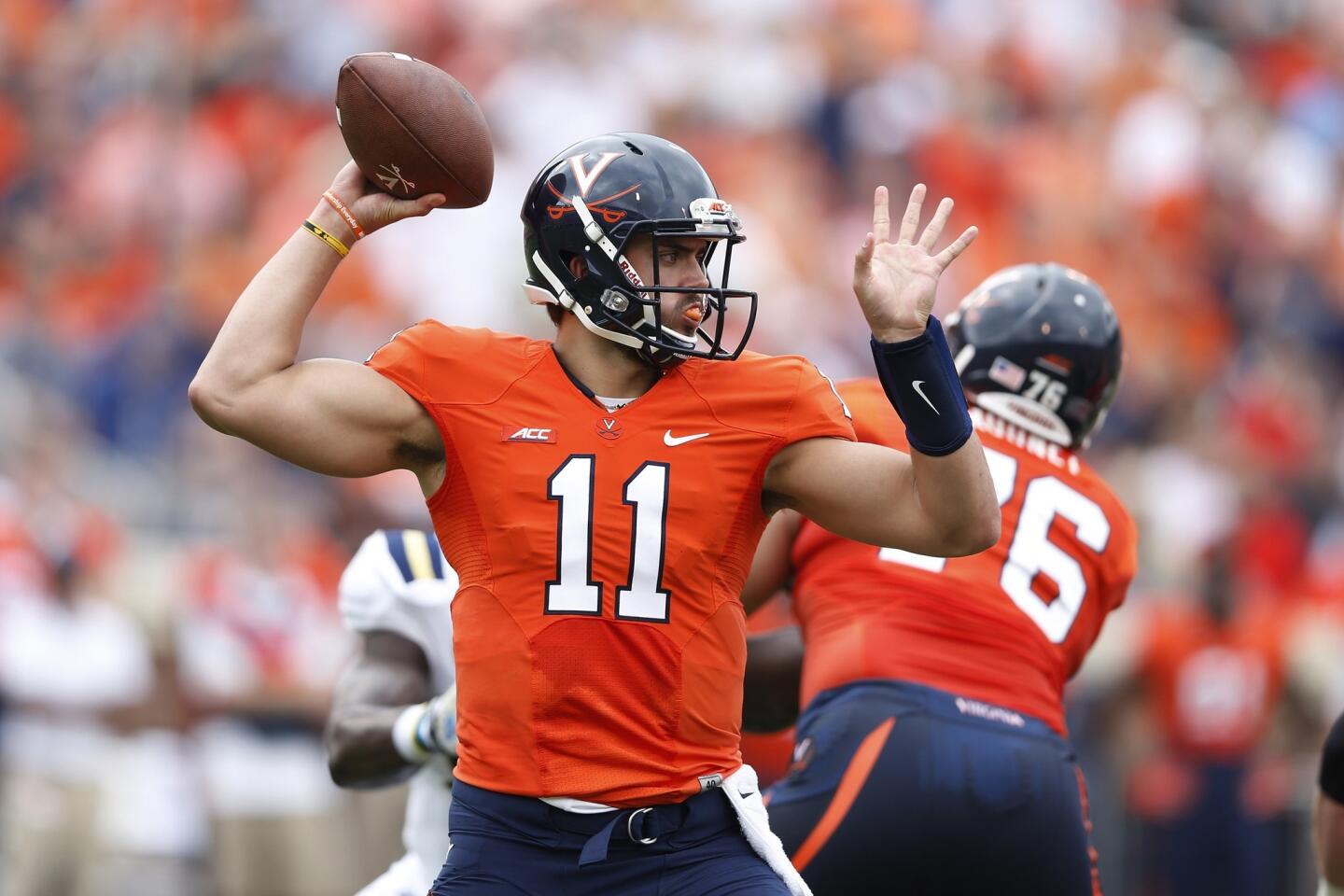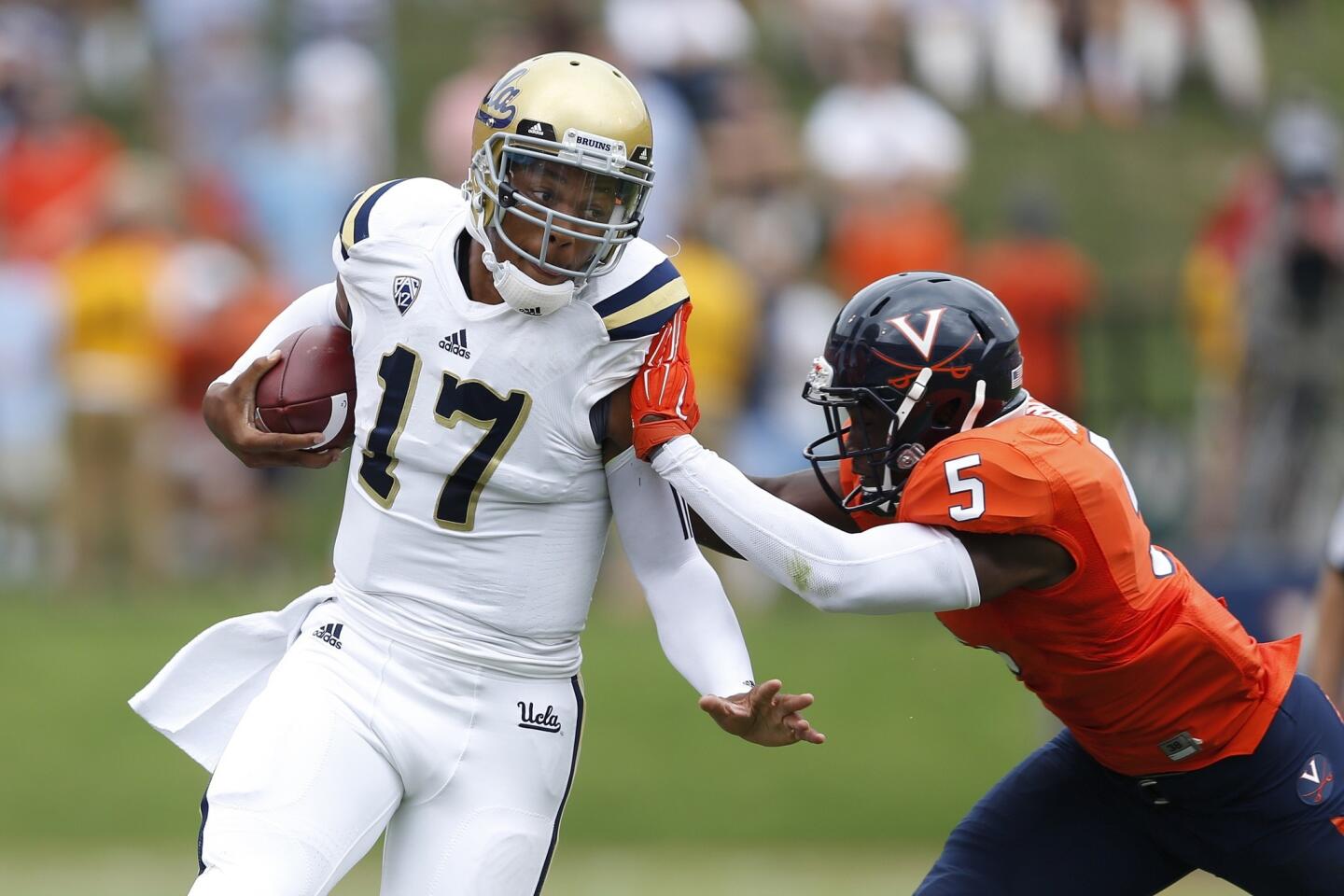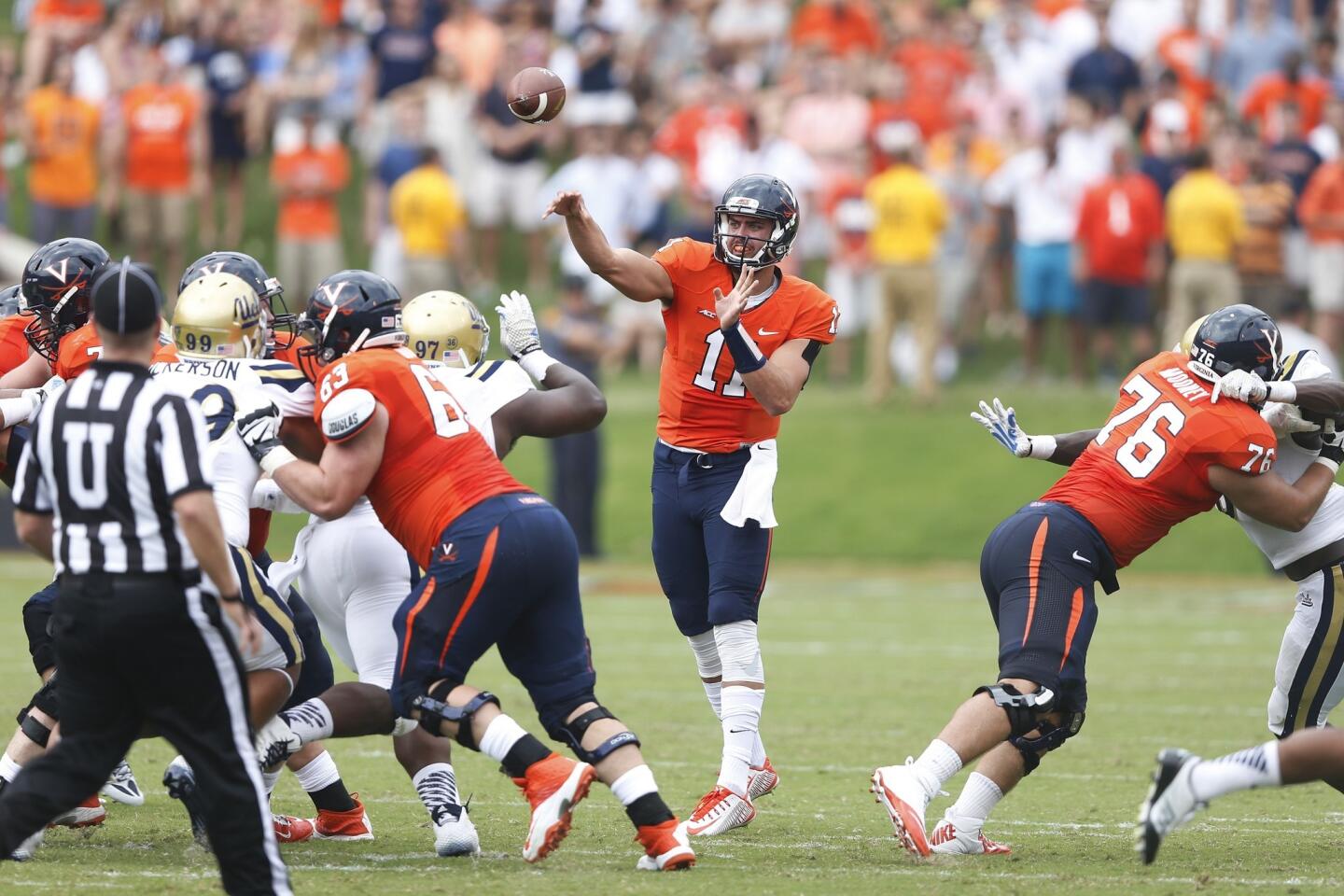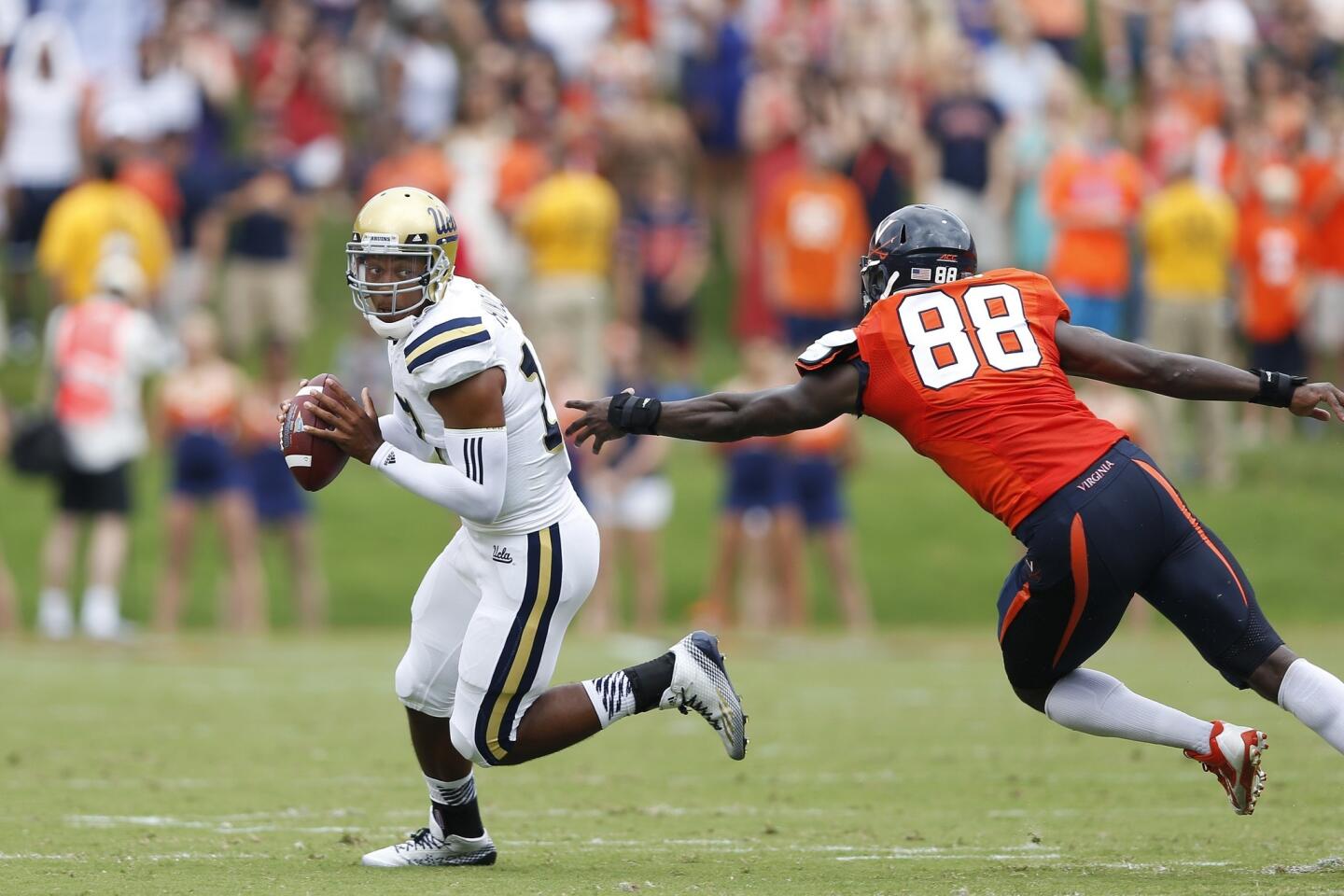What we learned about UCLA in its win over Virginia
- Share via
UCLA avoided a disaster Saturday by holding off Virginia, 28-20. Good teams win bad games, sure, but there are also a lot of issues that need to be fixed before the team plays Texas in two weeks. No, we’re not counting Memphis next week as a test.
Without further ado, here is the initial installment of a feature we will have after every Bruins football game: What we learned from UCLA’s latest game.
Brett Hundley needs help breaking free
It makes sense for UCLA and Coach Jim Mora to be cautious about getting quarterback Brett Hundley into space. He led the team in rushing last year, but the team was also very thin at the running back position. Hundley often didn’t have much of a choice. This year, the backfield is healthy. The more Hundley takes off on his own, the higher chance there is of an injury. It’s logical to want to keep him in the pocket.
But after one game, it’s pretty clear that Hundley needs to get out into space, especially if the offensive line continues to struggle. Hundley is at his most dangerous when he’s on the move. The numbers don’t reflect it (15 rushing attempts for 39 yards), but the majority of those runs were last-ditch efforts to escape pressure.
When the Bruins got into the red zone, they scored their only touchdown of the day on a designed quarterback draw. Hundley took the snap and used his 6-foot-3 frame to bully his way into the end zone in a way that not many other quarterbacks can duplicate.
The bottom line is that UCLA’s offense moves when Hundley moves. Maybe that will change if the offensive line improves or the wide receiving corps gets more in sync. On Saturday, at least, it was pretty clear that UCLA had the best chance of scoring when Hundley got into space.
Paul Perkins is the clear leader of the “running-back-by-committee” approach
During training camp, Mora maintained that his running back attack wasn’t going to be made up of one man. It was going to be a committee of three, with the trifecta being redshirt senior Jordon James, redshirt junior Steven Manfro and redshirt sophomore Paul Perkins.
But after week one, Perkins has the clear advantage.
As a team, UCLA averaged just three yards per carry, mostly because of James and Manfro. James had five carries for three yards. Manfro had two carries and lost five yards, and also lost four yards on his only reception of the day.
Perkins rose well above that, though. He finished the day with 80 yards on the ground, averaging five yards per carry. UCLA had one touchdown on the day, and it was set up after Perkins ripped a 16-yard run to get the Bruins into Virginia’s side of the field.
Last week, Mora said the running back rotation would be “ongoing as the games goes on. Who is having a good day? Who is struggling? What type of defense are we facing? It has to be fluid.”
Right now, the only fluid in this situation is the water Perkins drinks in between carries. He’s the No. 1.
UCLA misses Jake Brendel
The beauty about training camp is that teams never present any real issues. Everyone feels confident about everything.
For UCLA, some of that confidence has been in the offensive line. It was one of the weakest spots on the team last year, but with the maturity of younger guys, and improved depth, that weakness was going to turn into a strength.
That confidence continued even when starting center Jake Brendel went down with a sprained left knee in training camp. The redshirt junior had startd 27 straight games and is UCLA’s most important offensive player not named Brett Hundley, but the Bruins seemed confident about the position regardless. Even if Brendel couldn’t play, the coaches said, UCLA had enough depth to figure it out.
In week one, they were wrong. Brendel suited up, but didn’t play. He was replaced in the lineup by sophomore Scott Quessenberry, and UCLA struggled mightily because of it.
Of UCLA’s 12 penalties, five were false starts. Hundley was sacked five times and hurried countless others. Twice on fourth down, Hundley was stripped of the ball in the pocket.
Part of that is on Hundley. He needs to get rid of the ball quicker and trust his feet. If UCLA wants a chance at postseason play, though, they are going to need Brendel to come back or figure out how to replace him. Whatever happened Saturday isn’t going to cut it in Pac-12 play.
Myles Jack is not going to have a sophomore slump at linebacker
There were times Saturday when it looked as if the UCLA offense could have used sophomore Myles Jack, the running back who averaged seven yards per carry last season. Jack was busy on the other side of the ball as a linebacker, though, no longer focusing on both positions.
After a season where he won both the offensive and defensive rookie of the year, Jack is back to focusing at linebacker. He was only playing running back because of injuries at the position, a problem which has since been remedied.
And Saturday, playing on only one side of the ball, Jack looked like the present and the future of this defense.
He had 13 tackles, and two big pass breaks up, the second of which came on a fourth-down play late in the fourth quarter that gave UCLA the ball back when they desperately needed a stop. Jack was physical and mean, everything you could want from a linebacker.
Redshirt senior Eric Kendricks led UCLA in tackles Saturday with 16. Anyone who has watched a UCLA football game could have guessed that. But when Kendricks graduates after this season, he’s going to put the Bruins’ defense in the already-capable hands of Jack.
For more coverage, check out the live blog we had running during the game as well the coverage from our writers who were actually on the scene, Chris Foster and Chris Dufresne.
For more Bruin observations, follow Everett Cook on Twitter, @everettcook
More to Read
Go beyond the scoreboard
Get the latest on L.A.'s teams in the daily Sports Report newsletter.
You may occasionally receive promotional content from the Los Angeles Times.


